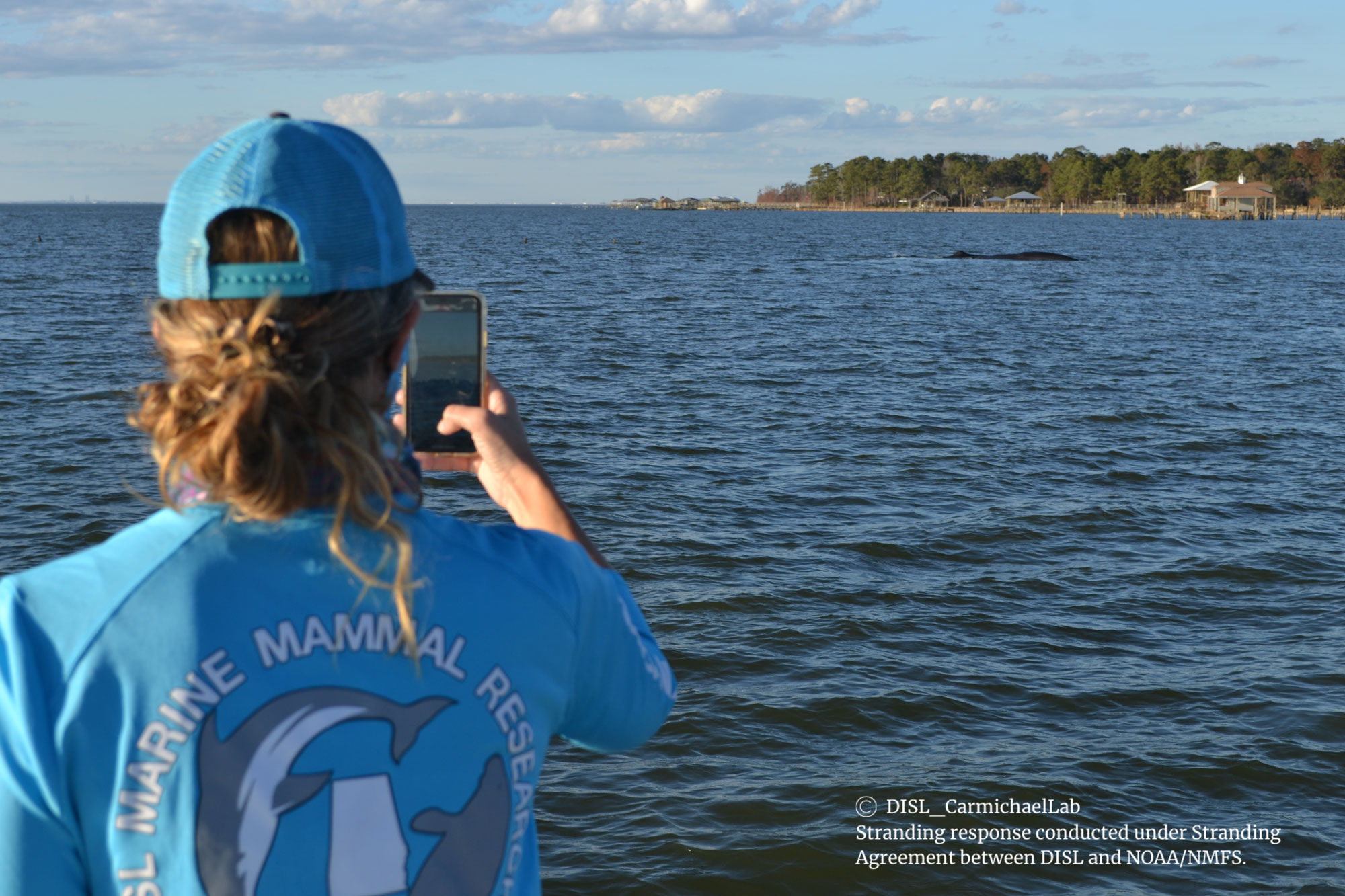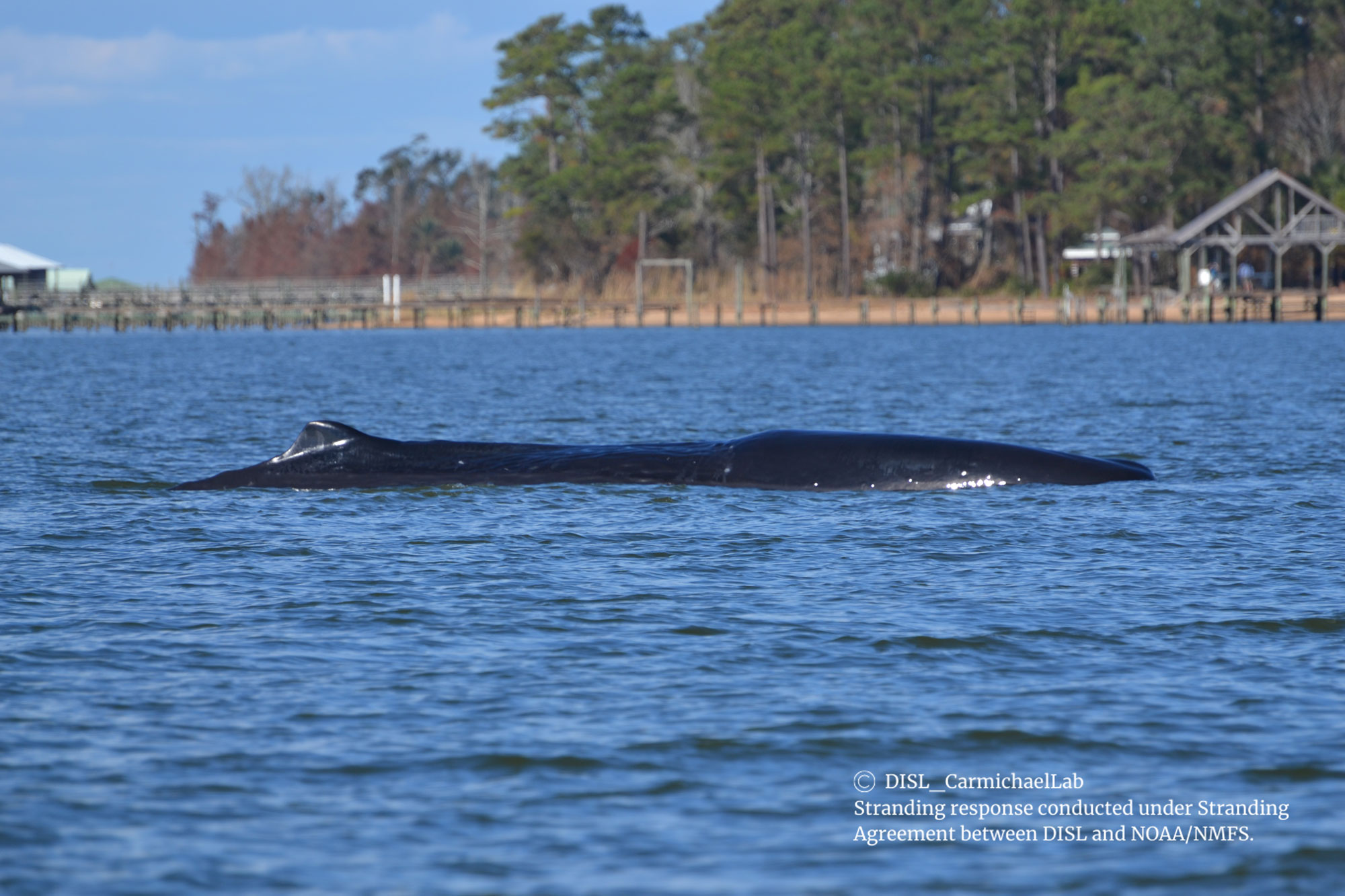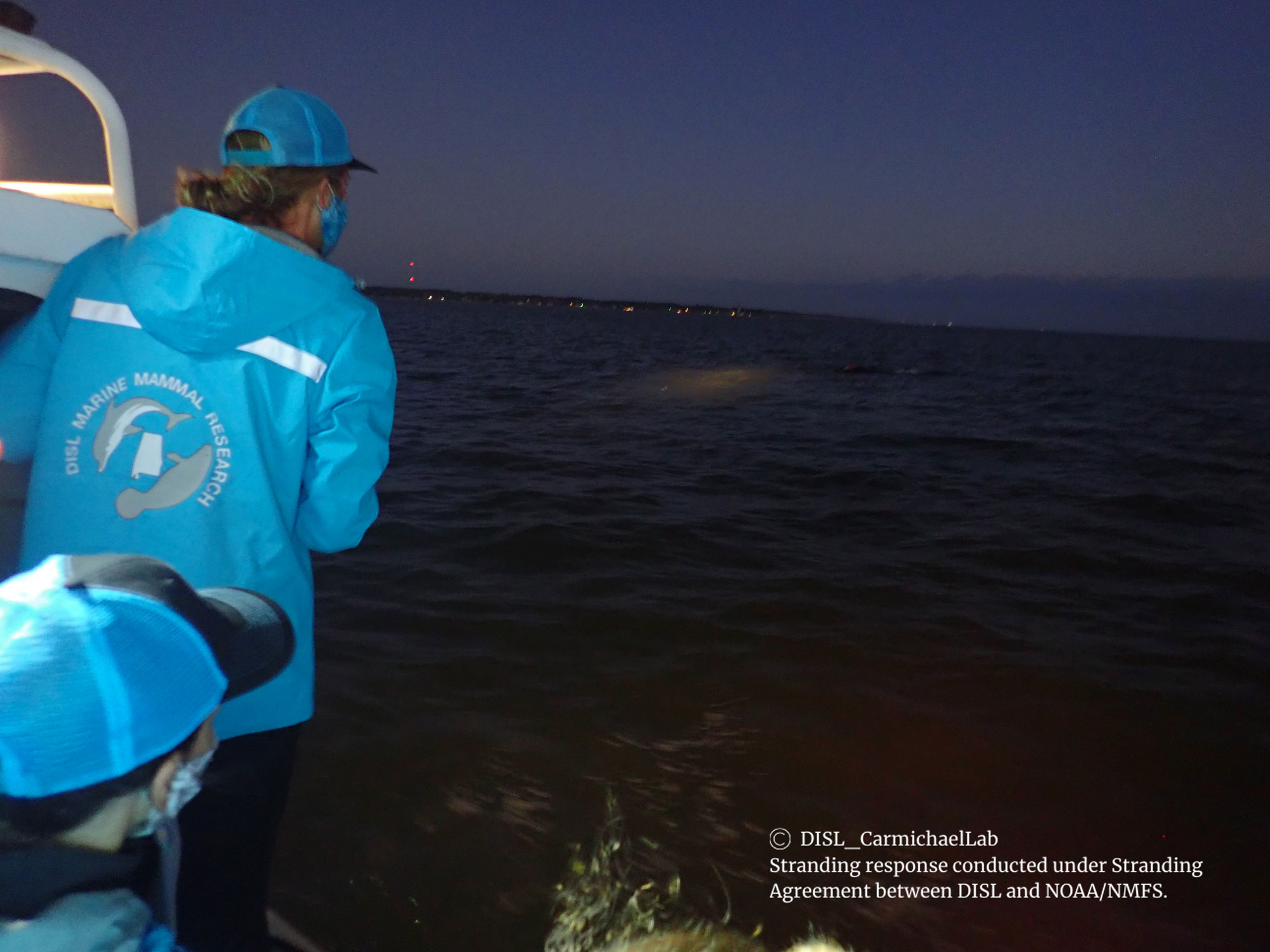(November 23, 2020) --

4:40 p.m.: Thank you for your ongoing concern about the adult sperm whale that stranded in Mobile Bay. This situation is complex and fluid. The whale is in poor condition and has limited swimming ability (swimming in circles and lateral position) in the water when free-floating.
The whale is considered to be very far out of its normal habitat. The normal habitat of the sperm whale is in deep ocean water. The fact that it ended up in Mobile Bay tells us that something is not right with the whale and is confirmed by emaciation and difficulty swimming. We are doing our best to keep the animal comfortable and keep it and the public safe while we monitor its condition and determine if there will be a need for euthanasia.
Unfortunately, the conditions have not been favorable to carryout euthanasia safely for the whale or humans. We are continuously monitoring the whale as conditions allow, and we are doing our best to do what is right for this whale with the consideration of the safety of our team.
We ask that anyone who sees the animal immediately contact the Alabama Marine Mammal Stranding Network at 1-877-Whale-Help (942-5343). For your safety and that of the whale, please do not approach or touch the animal. Sperm whales are an endangered species and any interaction with the animal is considered harassment. Please remain at least 500 yards from the animal.
9:44 a.m.: The Dauphin Island Sea Lab’s Marine Mammal Research Program and Alabama Marine Mammal Stranding Network want to thank the community for their support of our efforts to locate, monitor, and assess the condition of the sperm whale that stranded multiple times in Mobile Bay during the past few days.
The animal moved again during the night and was sighted around midnight Sunday, heading north in Mobile Bay. We ask that anyone who sees the animal immediately contact the Alabama Marine Mammal Stranding Network at 1-877-Whale-Help (942-5343). For your safety and that of the whale, please do not under any circumstances approach or touch the animal. Please remain at least 500 yards from the animal.
We sincerely appreciate the concern of the community for the animal’s well-being and have received many excellent questions about the stranding and response efforts. Below are some answers (courtesy of the NOAA Fisheries and ALMMSN) to the most common questions we received.
Thank you all again for your support and cooperation as we continue to monitor the animal.

Why do whales strand and can they be saved?
Large whales strand alive for many reasons, such as disease, malnourishment, and human-caused injuries. When whales strand, they also can experience stress from shallow water depth, exposure to the sun, scavenging from other animals, interactions with people, and other sources. All of these factors make it very unlikely that large whales will survive after stranding. Each case is different, however, and the ALMMSN responds to understand what may have caused the stranding. We do not yet know why this animal stranded in Mobile Bay.
Why does it take time to assess and respond?
Every stranding is unique and poses different challenges. The sperm whale in Mobile Bay is estimated to be 36 feet long and may be nearly 30,000 pounds. Because these whales are so large, they pose a serious risk of injury to people (even trained responders) in the water with them. Human safety is put first in every case when considering how to respond. When the whale cannot be safely approached or touched, particularly in water that is waist-deep or greater, the response team must monitor from a distance until conditions are right for a response. Many considerations such as tides, wind, weather, animal behavior, and risks need to be evaluated to guide a response.
Why can’t a whale be pulled out to sea?
Moving large whales has serious safety risks for the whale and for the responders involved. Trying to pull or push a large whale from the beach or a sand bar can require specialized equipment due to the size and weight of the animal and is often infeasible. While there are many social media videos of “successful” whale re-floating by using a rope or cable around the tail of the animal and pulling it with a boat, veterinarians and the International Whaling Commission consider these actions to be excessively painful, stressful, and physically harmful to the animal. Towing live whales by the tail can cause trauma to the whale such as dislocating the tail, damaging muscles, and causing paralysis, which is considered inhumane and may further injure the animal so badly that they are unable to swim, feed, and avoid predators, defeating the purpose of a rescue effort. It is also very difficult or impossible to remove rope or tethers from an animal once it is in deeper water, posing an entanglement risk. In many cases animals that have been ‘rescued’ in this way strand again a short time later due to the original illness or injury. Any type of movement of a large whale is generally only considered for an animal in good overall condition and when post-release monitoring is possible to determine the success of the rescue efforts. For this reason, towing out to sea is most often not a feasible or beneficial option.

When does the Stranding Network consider euthanasia?
If a stranded large whale is in overall poor condition (emaciated, malnourished, severe internal or external injuries) and remains onshore after 1-2 tidal cycles, euthanasia may be considered. The decision to euthanize an animal is made when it is deemed the most humane option by the NOAA Regional Stranding Coordinator in consultation with the local Network group, attending veterinarian, and Marine Mammal Health and Stranding Response Program staff at NOAA NMFS.
Like other response efforts, there are many risks and factors to consider for the safety and well-being of the whale and the responders. The method usually involves deep sedation so the animal is fully unconscious or ‘asleep’ before administering the euthanasia solution. The location and condition of the animal may affect the ability of a Network veterinarian to safely approach the whale to administer the solution.
Information about sperm whales, courtesy of NOAA Fisheries:
Sperm whale strandings are rare in our region. On average, two sperm whales strand in the entire Gulf of Mexico each year, and this is the first-ever sperm whale sighting or stranding in Mobile Bay.
The northern Gulf of Mexico sperm whale population is thought to be distinct from Atlantic Ocean stocks. Data from satellite-tagged sperm whales in the Gulf of Mexico indicate these whales move throughout the Gulf without discernable seasonal migrations.
- The sperm whale is listed as endangered under the Endangered Species Act and depleted under the Marine Mammal Protection Act.
- Sperm whales are the largest of the toothed whales and have one of the widest global distributions of any marine mammal species. They are found in all deep oceans, from the equator to the edge of the pack ice in the Arctic and Antarctic.
- They are named after the waxy substance, spermaceti, found in their heads. Spermaceti was used in oil lamps, lubricants, and candles. Sperm whales were a prime target of the commercial whaling industry from 1800 to 1987.
- Sperm whales are the only living cetacean that has a single blowhole asymmetrically situated on the left side of the crown of the head.
- Their heads are extremely large, accounting for about one-third of total body length.
- Sperm whales hunt for food during deep dives that routinely reach depths of 2,000 feet and can last for 45 minutes.
- They are capable of diving to depths of over 10,000 feet for over 60 minutes.
- Because sperm whales spend most of their time in deep waters, their diet consists of many larger species that also occupy deep ocean waters. This includes squid, sharks, skates, and fish.